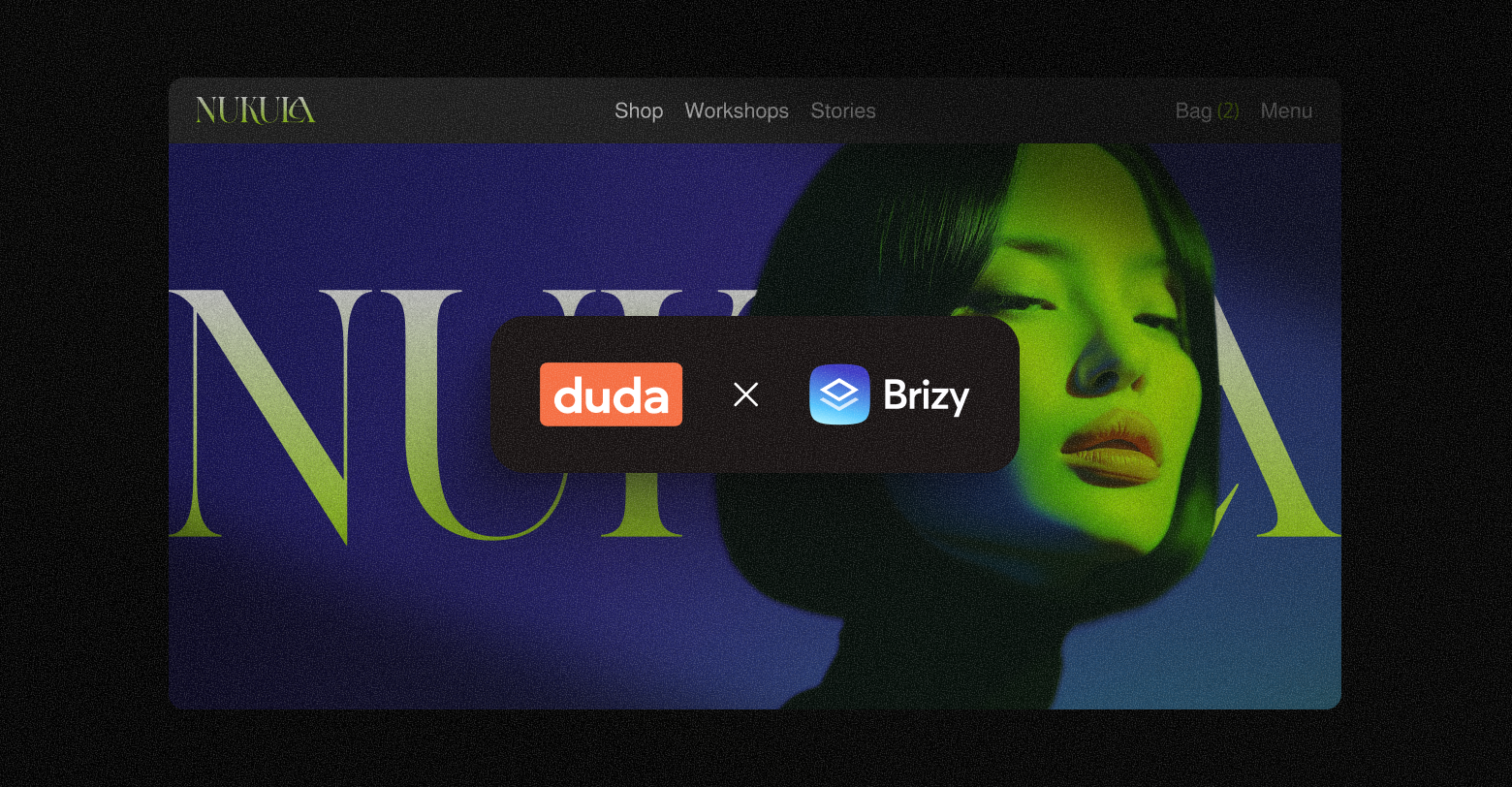If you are in the business of creating websites for a living, you probably already understand the importance of creating beautifully designed, high-performing websites for your clients. But did you know that nearly
38 percent of visitors will stop engaging entirely with a website if the content or layout is unattractive?
Web professionals no longer have the luxury of creating mediocre websites for clients and expect to retain them as clients long-term. Instead, to stay relevant in building websites at scale for customers, web pros need to consistently produce top-performing, high-converting sites for their clients.
With plenty of tools available through
website builders such as
customizable templates,
team collaboration tools, API integration to reduce build times, and drag-and-drop editors to make designing simple, it's entirely possible to create user-friendly, professional client sites at scale in-house.
But with many clients now looking to add advanced features such as
custom widgets, migrate hundreds of websites from existing builders, or other complicated design requests, it can become challenging for even the best website creator to satisfy every client. This is where working with a Duda Expert can help.
Keep reading to learn how to find and hire the right Duda Expert for your website build.
Who is a Duda Expert?
Before we go into how to find and hire the right person for the job, let's talk about who a Duda Expert is and what tasks they can help you with.
Formerly called a Fulfillment Partner, a Duda Expert is a vetted Duda partner who offers professional services based on their area of expertise. While a Duda Expert is not a Duda employee, each Duda Expert is certified and endorsed by Duda to ensure they provide the high-quality work and customer service that you would expect from a Duda partner.
What Services Can Duda Experts Provide?
Duda Experts can offer the following services to help you with your Duda projects, big or small:
- Web Design
- Template Creation
- Custom Coding
- Custom Widget Builds
- API Integration
- Website Migration From Other Platforms
If you have additional requirements not listed here, you can set up a time to chat with an Expert to determine if your project would fall into their areas of expertise.
Why Hire A Duda Expert?
So, now that you have a better idea of who a Duda Expert is and what services they provide, let's go over some of the benefits of why it makes sense to hire a Duda Expert.
- Deliver Pixel-Perfect Websites that Convert with UX/UI Coding
- Bring New Inspirations to Life Through Template Creation
- Design with Unlimited Capabilities Made through CSS and HTML
- Expand Your Current Offering with Custom Widgets that Caters Toward a Specific Client Need
- Gain the Ability to Offer Automated Workflows that make Content Management and Website Creation Effortless
- Perform Large Migrations from an Existing Platform to Duda Quickly
- Gain invaluable insight into your business strategy and processes.
While there are many more benefits to hiring a Duda Expert, you'll find out when you hire one yourself.
Top 5 Tips for Finding and Hiring the Right Duda Expert
It’s important that you partner with the right Expert for the job, so we’ve compiled some tips to help you in your selection process. Follow these tips for how to hire the right person and the best results on your project.
- Familiarize Yourself With the Duda Platform
If you are new to the Duda platform, it is a good idea to do some research of your own before speaking to a Duda Expert. Understanding the basics of the platform will help you have better conversations when talent sourcing your Expert and make you more comfortable taking over the project in the future.
Digging into the platform will also help you determine what you want to take on yourself and what is better left to an Expert. You
can sign up for a free trial here or learn more about
building your first site with Duda in this intro course to begin your research.
2. Outline Your Project Goals and Budget
To make the most of your time with an Expert, it's crucial to have a clear understanding of the scope of your project, budget, time frame, and other criteria necessary for success.
The clearer you are about your project beforehand, the better your results with your talent acquisition. Also, each Duda Expert sets their prices, so if you are cost-conscious, it is wise to get this on the table early on in your conversations with an Expert, so there are no surprises later on.
Take a look at
Duda’s success stories for inspiration of what is possible with the platform.
3. Research All of Your Options
Once you have defined your project, start a list of potential Experts you might want to work with based on your project requirements. We make it simple to find Experts in our directory based on industry, specialization, budget, language, and partner tier.
When you have narrowed your search down to a shortlist, consider creating a spreadsheet to weigh the pros and cons of each Expert. You should also consider checking out their reviews, Solution Partner status, and portfolio examples in your evaluation.
4. Include Helpful Information in Your Request
The more information you can include in your request, the better. Of course, you don't need to include every detail of your project here, but to get the most helpful response from an Expert, you should consider including the following items:
- A summary of your project
- A brief background of your company
- The core objectives of your project
- The timeline, milestones, scope, and delivery of the project
- The technical and functional requirements of the project
- Your budget for the project
- Your criteria for selecting an Expert
5. Close the Loop with Other Experts and Get Started
Once you have decided which Expert you want to work with, you can move on to the project. Remember to close the loop with other Experts you were in discussions with too. You can do this by emailing the Experts you didn't select to let them know you have chosen someone else.
Experts also appreciate notes of why you went another direction, so if you feel comfortable providing this information it can be beneficial to them. Remember that an evaluation goes both ways, so treating every Expert with respect can help you later down the line if you decide to work with another Expert for a different project.
Interested in Becoming a Duda Expert?
We would love to consider you if you meet the following qualifications:
- Current paying customer on a Custom Duda plan
- You need to have at least five published sites on the Duda platform
- You must complete the application and provide all required information
- Familiarize yourself with the
Duda Expert branding guidelines
- Pass and maintain all Duda University certifications in each area you want to offer services.
- You must agree and adhere to our
Terms and Conditions for the program
For more information about the program and applying, please visit our
Become a Duda Expert page.
While this list is certainly not exhaustive, we hope these tips will set you up for success on your next project working with a Duda Expert.
Ready to get started? Check out the
Duda Experts program today!
If you have any additional questions about the program, contact us at
experts@duda.co for info.
By Stephen Alemar
•
October 23, 2025
Discover why Duda is a top-rated website builder on G2, recognized for usability, easy setup, strong relationships, and excellent results, all backed by real reviews.
By Ilana Brudo
•
October 16, 2025
Discover why digital marketing agencies are choosing Duda over Wix Studio and WordPress for speed, reliability, and client experience, and how it helps them scale without operational overhead.
By Stephen Alemar
•
October 14, 2025
Duda vs. Brizy: Compare these website builders for agencies focused on scaling, client management, AI, eCommerce, and team collaboration.
Show More
Related Posts













